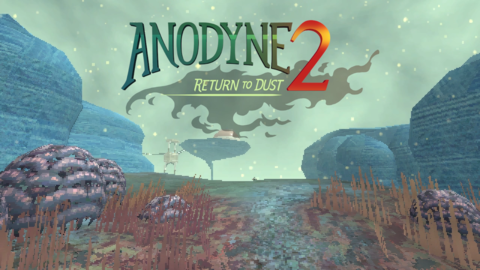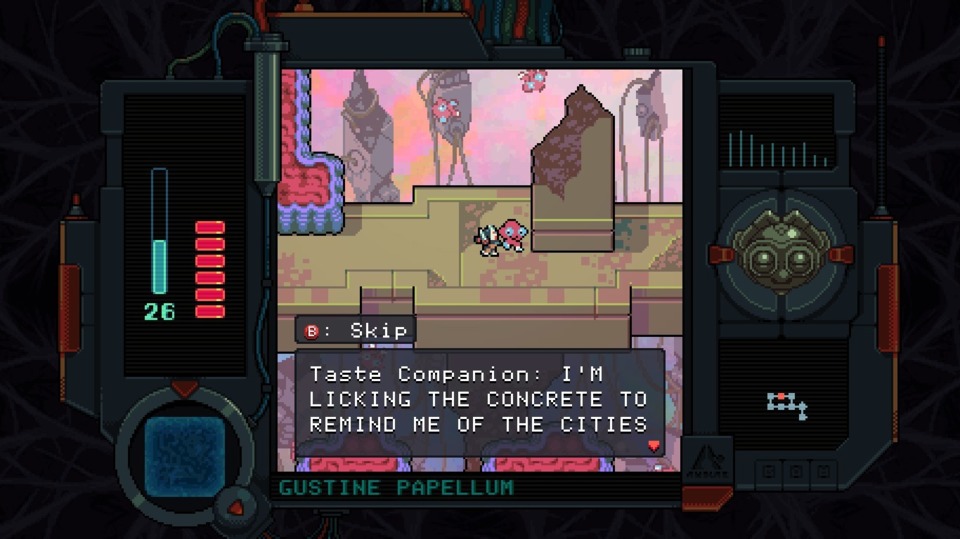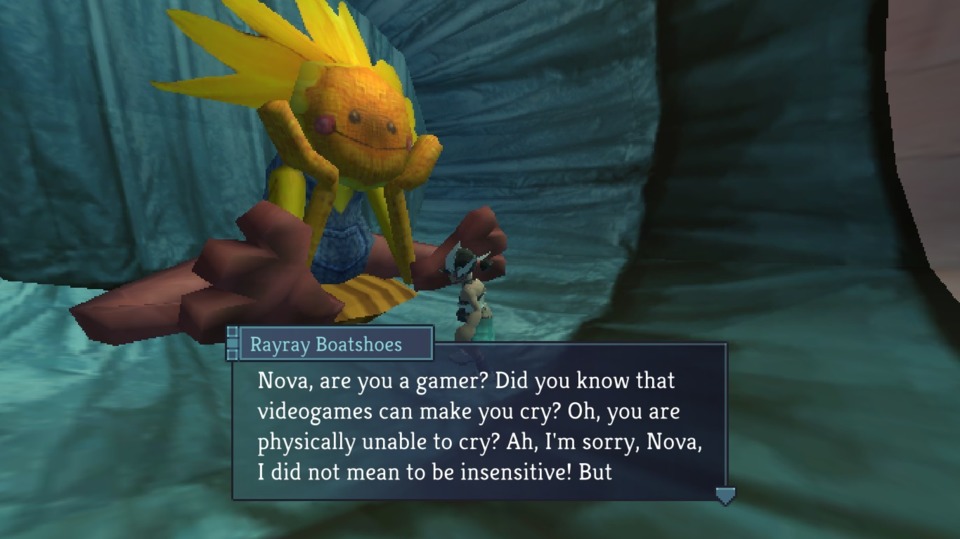Indie Game of the Week 171: Anodyne 2: Return to Dust
By Mento 1 Comments

I reviewed the first Anodyne some... six years ago? Damn. Well, some six years ago I encountered a game that was outwardly riffing on The Legend of Zelda, as many Indie games have before and since, but soaked in a surreal and deeply personal veneer that was at various points relatable and utterly foreign, like reading through a stranger's poetry of falling in and out of love with people you've never met. Anodyne 2: Return to Dust's writing is of a similarly flowery sort, and concerns a young woman - Nova - who is birthed by an apparently benevolent creator deity named The Centre in order to purify the world of the toxic and mutating "Dust": a microscopic force of chaos and entropy that infects hosts from within and turns them into monsters before eventually destroying them completely. Nova is gifted with the ability to shrink to minuscule size, allowing her to go "nano a nano" against the Dust virus directly with her trusty vacuum pack.
What's immediately striking about Anodyne 2 is its use of 3D graphics, deliberately low-poly, for its "overworld" sections full of bizarre NPCs to talk to and uneven terrain to traverse with some mildly in-depth platforming, but when it's time to shrink down and access a dungeon the game reverts to the standard 16-bit top-down look it sported in the original Anodyne. The dungeons operate the same as they did previously, with a handful of environmental puzzles and enemy encounters to resolve with Nova's vacuum before fighting a boss and removing the source of the host's Dust infection. The dungeons in this case are the interiority of the corrupted NPCs Nova meets, each of whom need to be internally cleansed of the Dust before they can return to normal. For a while, the game operates on a standard system where you obtain key item "cards" and earn dust from dead enemies and occasional dust devils, both of which can be deposited to power up a device that eventually permits access to new parts of the world with more NPCs, thus perpetuating the gameplay cycle. However, and I'm loathe to discuss what happens in the mid-game in any detail, this familiar cycle is suddenly upended and the ultimate goal of the game becomes that much more ambiguously defined.

This might feel like a stretch, but Anodyne 2 feels in tune with something like Matrix Software's Alundra for the PlayStation. Like Alundra, Anodyne 2's dungeons aren't so much physical but metaphysical, existing within and based upon the tortured psyches of the NPCs they pertain to. Like Alundra, Anodyne 2 isn't above constantly pulling the rug out from under the player's feet when they've settled into a comfortable rhythm, insisting that further progress won't be as straightforward as it once was and that this journey is likely to be marked with unexpected tragedy and suffering at any turn. Like Alundra, it looks like it'd feel right at home on a PlayStation 1 console (though in Alundra's case it wisely side-stepped any quickly-dated polygonal graphics, though the same unfortunately cannot be said for its inferior sequel). Alundra was a formative title for me, as the first instance I can recall of a Zelda-like game that did enough different to not feel like a flagrant clone, and so even if the similarities were unintentional I appreciate Anodyne 2 taking a comparable step towards something unknown and untested.
I also think that Anodyne 2's script, though very serious when it feels the need, is also pretty funny at intervals too. Calling the NPCs idiosyncratic feels like the mother of all understatements, and they're just as likely to have some truly powerful names to go with their abstruse polygonal appearances and eccentric personalities. Whether you're shooting the breeze with musician Faye McCool, trying to answer the incessant questions of the ebullient Rayray Boatshoes, or helping the creepy epicurean and tongue demon Gustine Papellum overcome his insatiable appetite, these very distinct individuals and Nova's own newborn naivety and insecurity result in some entertainingly strange conversations marked with profound koans and wry meta humor.
I have a few reservations with the game - the overworld can be a little too expansive and empty to be much fun to explore, even with Nova's zippier "rideform" mode, and the camera controls are about as adroit as they were in the PS1 3D platformers the game's hearkening back to - but I love its heart, and I love the Zelda-esque gameplay core with its peculiarly-themed dungeons, each of which is dominated by a similarly themed puzzle type (a dungeon for a scientist's robotic "clone", for example, involves a lot of puzzles focused on a shadowy doppelganger you can trick into hitting switches and killing itself). With the mid-game revelations in full swing, I'm now looking forward to seeing how the whole thing ends and meeting even more phenomenally-monikered weirdos with Dust-related problems to quash.

(PSA: I don't know who needs to hear this, but as this was an Epic Game Store giveaway I was forced to cobble together a solution to take advantage of Steam's screenshot feature and Steam Controller support. Turns out this is very easy to do if you just add the Epic Game Store Launcher itself to Steam as a non-Steam game. EGS still needs a lot of UI/UX work to get to where Steam is now, but this is a handy shortcut for the time being.)
Rating: 4 out of 5.
| < Back to 170: Death's Gambit | The First 100 | > Forward to 172: Mutazione |
